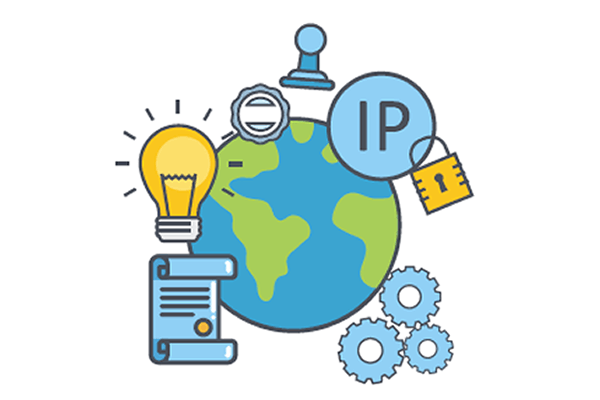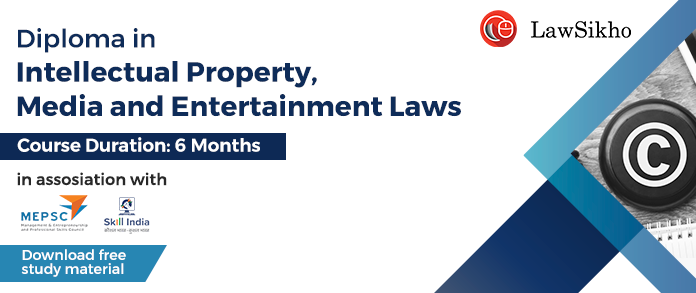This article has been written by Raslin Saluja, from KIIT School of Law, Bhubaneswar. This article evaluates the Indian Copyright law in terms of protecting Intellectual Property on the Internet.
Table of Contents
Introduction
In this age of digitalization, India has come a long way from 1995 with a total of 10,000 users to the present age with millions of internet users of which the numbers keep growing daily. We are just a click away from uploading, downloading, using, sharing, modifying data online in the form of documents, pictures, music, videos, and the like. The internet has now managed to reach every nook and corner with the required infrastructure and private company involvement. With its enormous growth and expansion in the various areas of the internet, issues related to Intellectual Property Rights (IPR) protection are likely to arise.
Need to protect
The internet in many ways has taken the place of the middleman between a content creator and its audience With the advent of the industrial revolution, books are now available to buy and read in digitized versions, same with the graphic designs, music platforms, podcasts, documents- all of which have entered the market. However, the question arises in cases where one person buys it and shares it to others on a public platform – how do we determine the line between private use and public use.
Information protected under IPR online includes music, computer programs, databases, words, trademarks, service marks, literary work, etc which can all be easily copied and transmitted by way of reproduction, publication, and dissemination. To that end, the internet has rather widened the scope by introducing new ways to cause such infringement like linking, framing, and meta-tagging. The prime reason behind it is one can often easily and very conveniently maintain their anonymity while protracting such data without seeking due permission from its rightful owner. The loss here is also beyond measures because of the presence of a myriad number of users in the indefinite boundaries of the internet. Determining which is certainly a complex task amidst the vast geographical regions. Further, even if search engines are used, there are other jurisdictional matters which would get invoked.
Existing laws
The Indian law of copyright deals with protecting the original forms of expression and includes protection of literary work, music, computer software, and sound recordings amongst categories of works. The law of patents aims to provide protection to inventions, including product and process, non-natural plants amongst other inventions. Another law is the trademark Law that grants protection to words and logos but the typical color combination. Further unfair competition or trade practices are also looked at along with the law of trade secrets protecting sensitive business information. Unique and original designs used for products are protected under the law of industrial designs.
Rights protected under IP
We are currently at a stage where the internet is not only used for entertainment purposes but also for money-making commercial transactions. However, the conventional principles of intellectual property law continue to apply to the virtual world as much as it does in the real world. Since it is very easy to make a copy of data in electronic format, we face essentially three major issues as far as copyrights are concerned:
- Firstly, the dilemma between private use and public use of data. The Indian Copyright Act like the other copyright laws of the world differentiated between reproduction for public use and private use. The laws suggest that reproduction for public use requires the right holder’s permission, whereas private use is allowed by law to the extent of research, criticism, or review. But, this distinction can easily be overcome wherein an individual shares such a category of work over the Internet in the open with the masses in multitude simultaneously maintaining their privacy and users being able to download such material so shared, in their homes.
- Secondly, according to the concept of the olden times, publishing or producing CDs, we face a new question whether placing a work available on the internet would qualify as publication or not. Publication for purposes of copyright in Indian law means “making a work available to the public by issue of copies or by communicating the work to the public.” This scope of this definition rather seems to cover electronic publishing and therefore, publication on the Internet. Another unsettling question is whether communication over the internet is communication to the public. Again following the definition given in the Act, communication to the public means“making any work available for being seen or heard or otherwise enjoyed by the public directly or by any means of display or diffusion other than issuing copies of such work regardless of whether any member of the public actually sees, hears or otherwise enjoys the work so made available.” Though an exhaustive definition, still is rendered broad enough to include communication over the internet within its fold. This could make it a potential problem for internet service providers in India.
- Thirdly, the other issue is distribution rights. According to Indian law, the first sale exhausts the right of further distribution. Whereas in real life, one can freely pass/sell a second-hand book. However, on the internet, reproduction will be required for distribution. And such unauthorized use would form an infringement on the owner’s right to intellectual property.
In the case of CIT v. Oracle Software India Ltd, the court held that duplicating a CD at home may amount to piracy and violation of Section 14 of the Copyright Act, 1957. Amidst so many new gadgets in the likes of scanners, smartphones, digital cameras, Ipads, I-pods, web tv, data replication, and distribution it has rather become easy. There are even hybrid infringements apart from the traditional crimes that we know like framing, deep linking, sale of pirated content which make it a major challenge to protect ones’ IPR. According to a report of the International Federation of Phonographic Industry (IFPI), music piracy has reached unacceptable levels in India, China, Brazil, Indonesia, and Pakistan.
Whilst, the rights of the member country can be enforced without mandatory registration under conventions and treaties like the TRIPS Agreement and Convention on Protection of Copyrights, as long as a country is a signatory to the convention or treaty for copyright protection. In the case of Dhiraj Dharamdas Dewani v. M/s Sonal Info Systems Pvt. Ltd, the court opined that in absence of registration under Section 44 of the Act by the owner of the copyright, one does not have the right to enforce remedies under the provisions of the Act against the infringer for any infringement under Section 51 of the Act. Wherein, Section 51 states registration of copyright is mandatory to seek legal redress for copyright infringement. The court further stated that it would be preposterous to attribute infringement to a person ( the infringer) unless they know that there is any particular owner of copyright in India or that such owner of the copyright has registered his work under Section 44 of the Copyright Act, 1957 before they did.
Among other problems is also the need for homogeneity which is a difficult task as the implementation becomes territorial in nature. Various countries have different approaches for the requisites to execute the provisions. Be it registration or protection of moral rights, the performer’s rights, or term of protection, all of which may not stand on equal footing, if an infringement across the borders were to take place. To have a unification would require incorporating various conventions and treaties, again whose interpretations might vary across jurisdictions. Thus, a multidimensional framework with a dynamic approach comprising legal, social, and technological terms in a generic manner applicable to all Is needed to combat IP infringements in cyberspace.
Though copyright law seems to be the most promising mechanism currently at our disposal for managing IPR matters on the Internet, even today, the definition of copyright infringement needs to be interpreted objectively. This arises out of the basic nature of Internet transmission. Replication and temporary copying (caching) take place at every stage of transmission. It is a significant step for the transmission to take place across computer networks through the Internet to reach their destinations. Even when a user only wants to browse through, temporary copying takes place on the user’s computer. This even today remains largely inconclusive as to whether an involuntary copy would amount to infringement or not. Because even for browsing upon the internet a temporary copy is created. Similarly in the matter of exclusive rights and fair use- wherein after the protection expires, the work is available to the public free of cost. However, its interpretation varies strictly across the jurisdictions. All these call for a serious revaluation of the terms.
For instance, in India, a website such as Napster which enables users to share and distribute music and video files, films, shall be held liable under Section 51 read with Section 14 of the Copyright Act, 1957 for violating the exclusive right of the author of a work and committing copyright infringement. In case it is argued that it is only indexing or listing service and not transferring per se, nevertheless, Section 63 of Copyright Act, 1957 states that any person who ‘knowingly infringes or abets the infringement of copyright in a work or other rights conferred by the act excluding right under Section 53A shall be punishable with imprisonment for a term not less than six months but may extend to three years and fine of not less than rupees fifty thousand which may extend to rupees two lakhs.
Section 51(a)(ii) of the Copyright Act, 1957 which holds liable a person for communicating a work that would amount to infringement, does not limit its application to the conventional medium of communication and could extend to cover cyberspace also. Further downloading or issuing or communicating any copyrighted file in public will constitute copyright infringement under Section 14. Even the intermediaries cannot escape liability under Section 79 (3) of the amended IT Act, 2000, wherein an intermediary has conspired or abetted or aided or induced, whether by threats or promise or otherwise in the commission of the unlawful act. To its effect, even distribution for trade that affects the owner’s rights negatively would amount to infringement under Section 51(b)(ii).
Other debatable areas include the issue of liability for actions in the course of transmission of a legalized copy of a work. Responsibility shall be fixated on whom? The party who dispatches the work or the party who receives it or the Internet service provider. Further, for the distribution of a copied work, would an Internet service provider unknowingly be held liable for any infringement caused by a subscriber remains a moot point. Though the provision demands that such abetment of infringement must be made knowingly but is it possible that by virtue of that expression, the service provider may be absolved from liability and escape punishment. Herein they might be liable under the national law of another country. Even for data, there can be differences in culture for acceptance of the material being transmitted over the Internet. This policing over the internet will not be easy.
International organizations
WIPO
WIPO plays an immense role in harmonizing copyright issues across jurisdictions. The WIPO Copyright Treaty, 1996 and the WIPO Performances and Phonograms Treaty, 1996 are two remarkable treaties dealing with relevant IP issues. Though, the only setback is that they mainly provide guiding principles for member signatories for protecting intellectual property in the offline world.
WIPO Copyright Treaty, 1996
This is a very specific agreement under the Berne Convention which requires even those member nations not bound by the Berne convention to comply with the substantive provisions of the 1971 (Paris) Act of the Berne Convention for the Protection of Literary and Artistic Works (1866). As for India, though it is a party to the Berne Convention, it is not a member nation to WIPO Copyright Treaty. The WIPO Copyright Treaty focuses on copyright protection and envisions the need for drafting new up-to-date laws and to clarify the interpretation of existing laws dealing with copyright, specifically pertaining to the digital environment.
The treaty makes the right of reproduction applicable to electronic records or digital works alongside the exceptions as mentioned in the Berne Convention also apply to the online world. With respect to the communicating rights, the authors can communicate to the public their copyrighted works in accordance with the provisions of the Berne Convention including wire or wireless means. It covers communication to the public, on-demand programs, and interactive communication using the internet. Article 10 of the treaty confers flexible decision-making on the member countries to introduce other limitations so as to strengthen the protection of IPR. This has been used by some countries to enact copyright legislation for digital content in their countries.
WIPO Performances And Phonograms Treaty, 1996
This essentially provides protection of intellectual property rights of performers (including actors, singers, and musicians) and producers of Phonograms (sound recordings). As of now, it is non-binding on India, since India is not yet a party to the treaty. It states that the rights and exceptions dealt with in the treaty are equally applicable to the digital world and that storing any performance or phonogram in electronic format will amount to the reproduction of the protected work. However, even here there is a lack of clarity in terms of rights of communication and broadcasting on digital platforms. The member states have been given the liberty to enact new laws to create restrictions and exceptions to the provisions of the Treaty as required for the digital environment.
Drawbacks of WIPO Treaties
Though WIPO has provided immense contribution in framing ground principles for IPR regulation, it still lacks on many fronts. It fails to recognize the various complexities of cyberspace and adopt effective and sufficient techno-legal measures to protect intellectual property rights online. Specifically, there is a lack of a comprehensive and thorough regime to deal with copyright infringement online and their enforcement issues in parallel to WIPO provisions. More emphasis is required on the various aspects of Digital Rights Management, the definition of fair use, and acceptability of reverse engineering in order to bring uniformity in the legislation of member states and remove the existing obscurity in the WIPO regime. Also, there is an absence of strict adoption and corrective measures to have proper checks and balances.
Conclusion
Thus, even today, a variety of issues persist for intellectual property rights protection on the internet. It often leads us to wonder whether having a sui generis system of intellectual property rights protection would be the right solution to meet the new technological challenges. It might widen the scope and its level of protection. While copyright laws have been very flexible in adapting to the new advancements, there still is much rigidity in them. The major difficulty lies in balancing the rights of the various members involved without hampering the purpose of it all. Be it a free flow of information or the economic benefits that are derived from it. Thus, we face two major challenges in the coming times as an intellectual property right administrator: what to administer and how to administer.
References
- https://www.mondaq.com/india/copyright/607438/copyright-protection-of-online-content
- https://www.trade.gov/knowledge-product/india-protecting-intellectual-property
LawSikho has created a telegram group for exchanging legal knowledge, referrals and various opportunities. You can click on this link and join:












